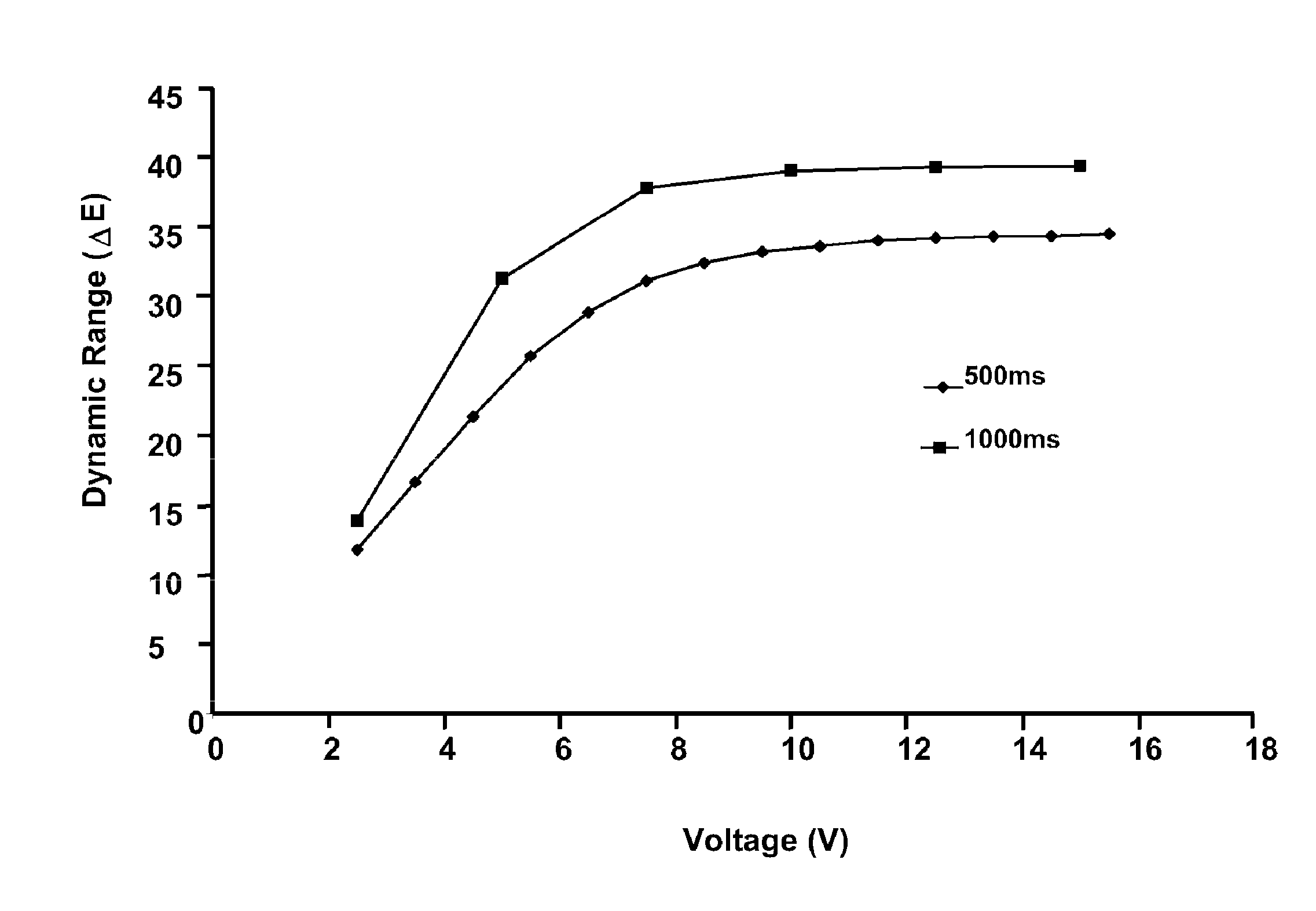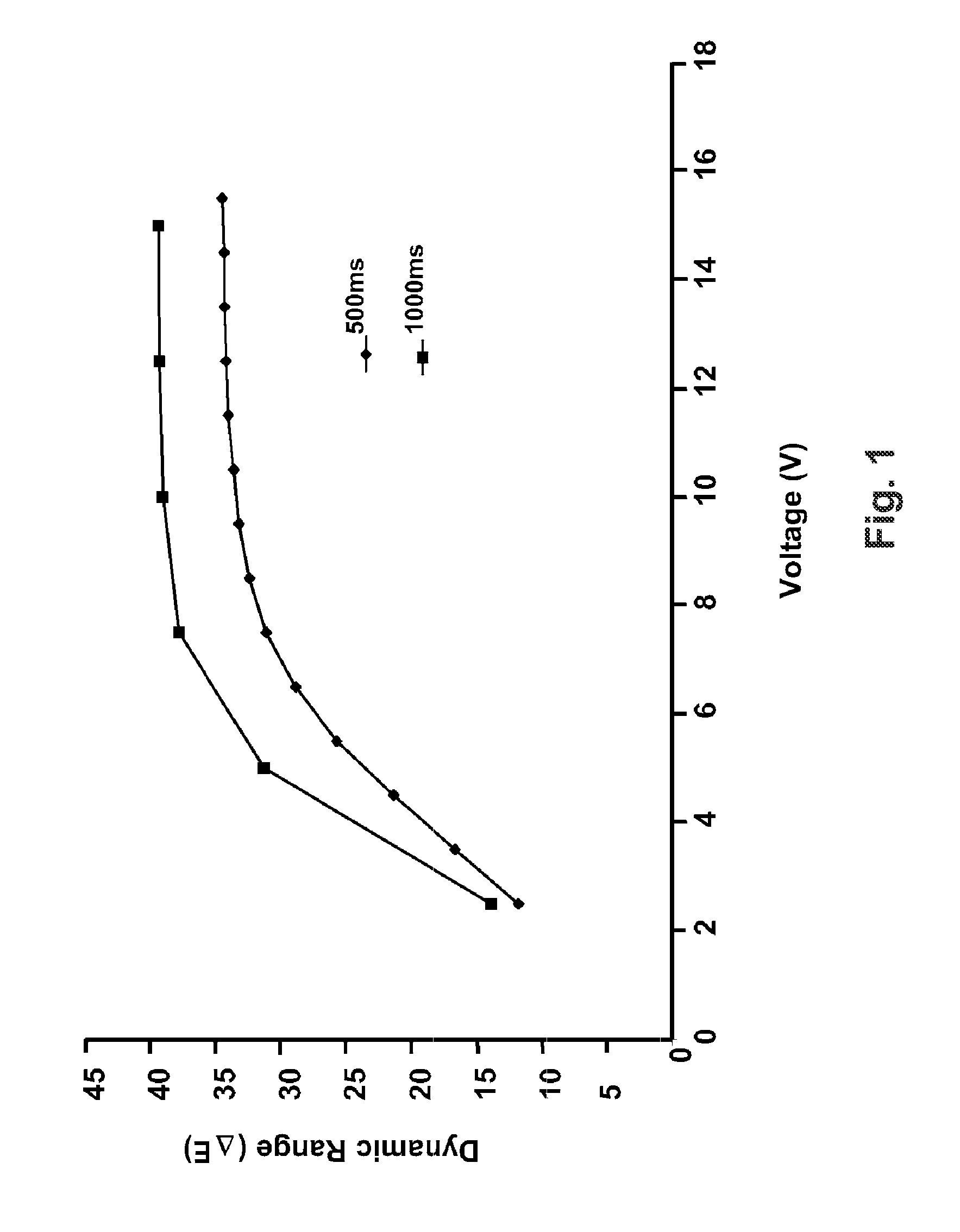Particles for use in electrophoretic displays
a technology of electrophoretic displays and particles, applied in the field of particles for use in electrophoretic displays, can solve the problems of inadequate service life of these displays, preventing their widespread use, and gas-based electrophoretic media being susceptible to the same types of problems
- Summary
- Abstract
- Description
- Claims
- Application Information
AI Technical Summary
Problems solved by technology
Method used
Image
Examples
example
[0028]Four different composite particles of the present invention were prepared. In all four cases, the core inorganic pigment was titania (R-794 titania available from E.I. du Pont de Nemours & Company, Wilmington Del.). Four different organic pigments were used, namely Hostaperm Red Violet ER-02, Hostaperm Violet RL Special, Hostaperm Red P2GL-WD, and Hostaperm Blue B2G, all available commercially from Clariant Corporation, 500 Washington Street, Coventry R.I. 02816. According to the manufacturer, these organic pigments have average particle sizes in the range of about 50 to 100 nm. Only the preparation of the first composite particle will be described in detail, since the others were produced in an exactly similar manner.
[0029]Part A: Coating of Titania with Organic Pigment
[0030]A 10% by weight solution of poly(vinylpyrrolidone) (PVP) was produced by charging a 500 mL Erlenmeyer flask with deionized water (180 g) and poly(vinylpyrrolidone) (20 g, from Aldrich Chemical Company, mo...
PUM
| Property | Measurement | Unit |
|---|---|---|
| particle size | aaaaa | aaaaa |
| particle size | aaaaa | aaaaa |
| particle size | aaaaa | aaaaa |
Abstract
Description
Claims
Application Information
 Login to View More
Login to View More - R&D
- Intellectual Property
- Life Sciences
- Materials
- Tech Scout
- Unparalleled Data Quality
- Higher Quality Content
- 60% Fewer Hallucinations
Browse by: Latest US Patents, China's latest patents, Technical Efficacy Thesaurus, Application Domain, Technology Topic, Popular Technical Reports.
© 2025 PatSnap. All rights reserved.Legal|Privacy policy|Modern Slavery Act Transparency Statement|Sitemap|About US| Contact US: help@patsnap.com


